Ever since 47-year-old Dorje Angchuk, the Engineer-in-charge of the Indian Astronomical Observatory at Hanle, became the first Indian to be inducted as an Honorary Member of the International Astronomical Union “for his passionate promotion of astronomy in the Ladakh region, through his excellent astrophotography”, there has been no shortage of media attention.
When approached by The Better India for an interview about his mesmeric astrophotography, Dorje’s initial response was, “Media is making it too big and difficult for me. I just want to enjoy my hobby.”
Nonetheless, he was kind enough to entertain our queries and explain in fascinating detail his ‘hobby’, the motivations behind it and prospects for Astro-tourism in Ladakh.
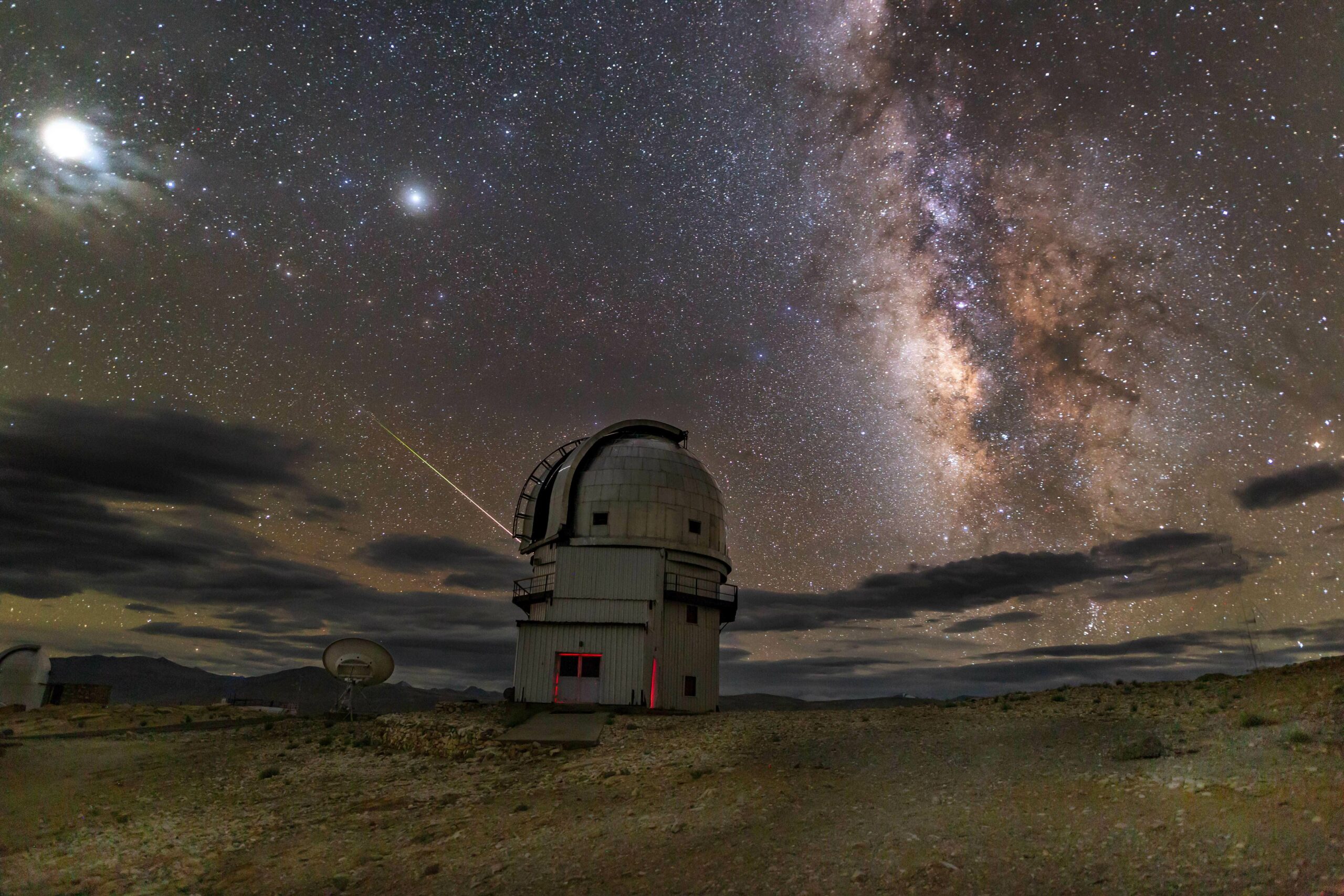
Early Inspiration
Dorje’s first distinct memory of seeing the northern sky in its pristine glory came in 1986 when he was among the “few lucky kids” invited to see the planet Saturn through a 20-inch telescope set up in the Skara area of Leh. A few years later, one of his father’s friends brought with him an astronomy guidebook. Although he doesn’t recall reading it thoroughly, he remembers the number of times he saw the pictures inside it.
Born and raised in the village of Spituk, Dorje did his schooling from Leh and Jammu before enrolling in a BE Electronics and Communication programme at the Sardar Vallabhbhai National Institute of Technology Surat. During his final year in college, he witnessed the stunning Hale Bopp comet in 1997, which further piqued his interest in astronomy.
“When I finished college in 1998, I joined as a trainee engineer at the yet to be established Indian Astronomical Observatory (IAO) operated in Hanle by the Indian Institute of Astrophysics, Bengaluru. After working as a trainee engineer for two years, I was given a full-time job in 2000. In June 2001, the IAO was established. Since 2008, I’ve been the engineer-in-charge at the observatory,” says Dorje.
His primary task at IAO is to maintain the IIA telescope with assistance from five fellow engineers and a scientist. In the past, Dorje and his team would visit the site at Hanle (an eight-hour journey from Leh) and spend three weeks at a stretch every month. However, after stabilising the telescope, the number of days spent at the observatory came down as the telescope could be operated remotely from Hoskote, near Bengaluru.
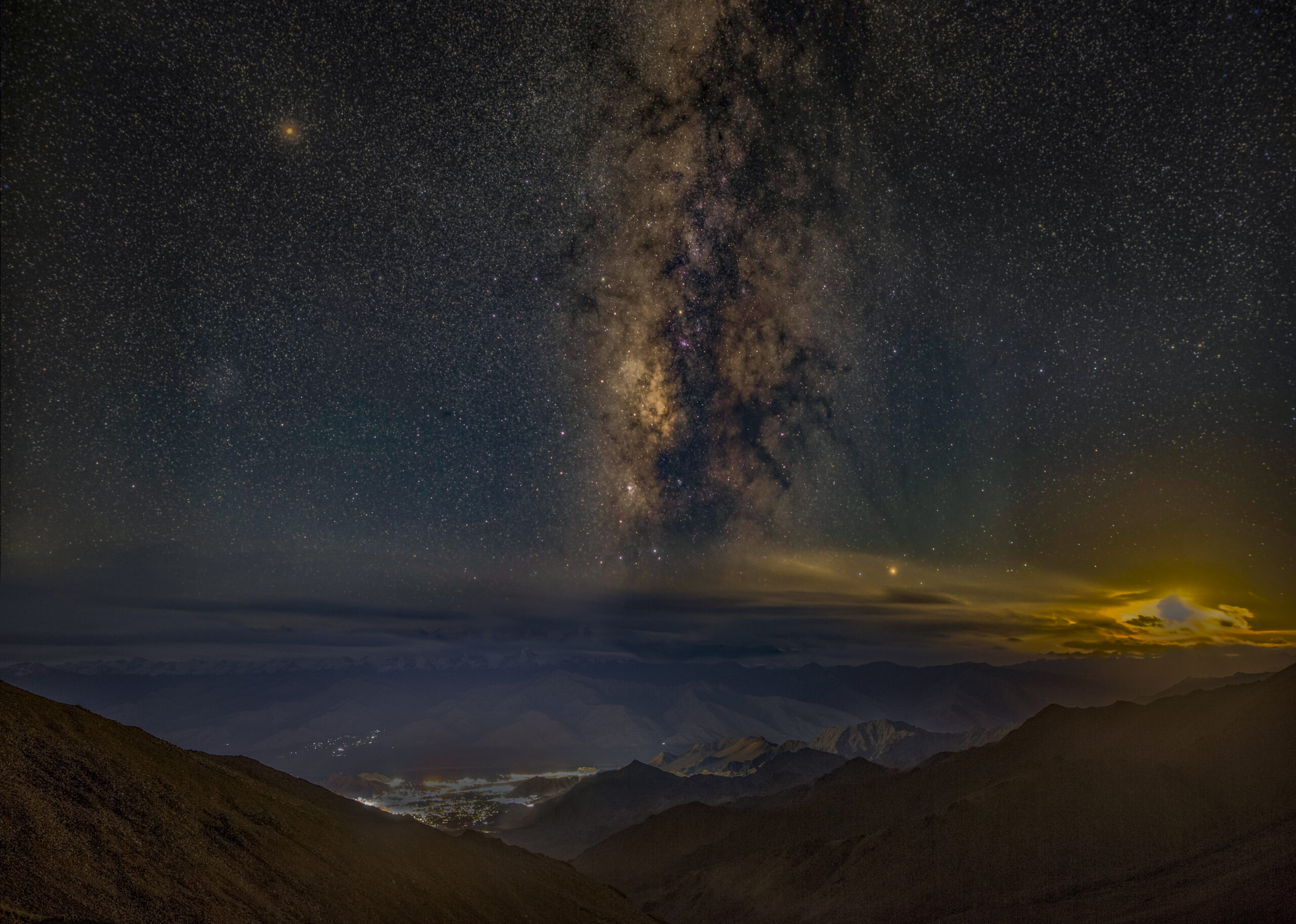
In 2009 Dorje met the man who would inspire his sojourn into astrophotography – Ajay Talwar.
Ajay is a renowned astrophotographer and a member of The World At Night (TWAN), an international project to produce and present a collection of high-quality photos, videos, and virtual reality (VR) images of the night sky.
“Seeing his photos of Hanle astonished me. I was stunned at how both the night sky and landscape could be beautifully shown together. The night world through a DSLR camera was so much more beautiful than the darkness our eyes could catch. It also showed me the possibility of showcasing the beautiful nightscape of my land. Moreover, this was around the same time the camera technology revolution made it possible to shoot better at night. So when I was building my house the following year, Ajay forced me to buy a camera. Taking a loan from my colleague, I bought my first camera, a crop sensor Canon 500D with an 18-55mm and 55-250mm kit lens. The results were initially good. My journey into astrophotography began by taking star trails that were quite famous back then,” he explains.
Along the way, he met with some “fantastic photographers and brilliant astronomers” and learnt much from them.
“Slowly, I also learnt that manual prime lenses yielded good results too as compared to expensive automatic lenses. Since then every year, I began gifting myself some piece of equipment or other to further my hobby. After improving my technique with lots of practice, I upgraded to a Canon 6D sometime around 2017, the cheapest and best full-frame camera around for all uses. Now I also have a full-frame Sony a7s2, which was specially made for nighttime astrophotography and videos,” he adds.
Another motivating factor behind Dorje’s hobby was a question someone asked him during his time in college.
“They asked me where I was from? When I responded with ‘Ladakh’, they asked which country does it belong to? In the back of my mind, I decided that someday I would show the beauty of our land to all my friends,” notes Dorje.
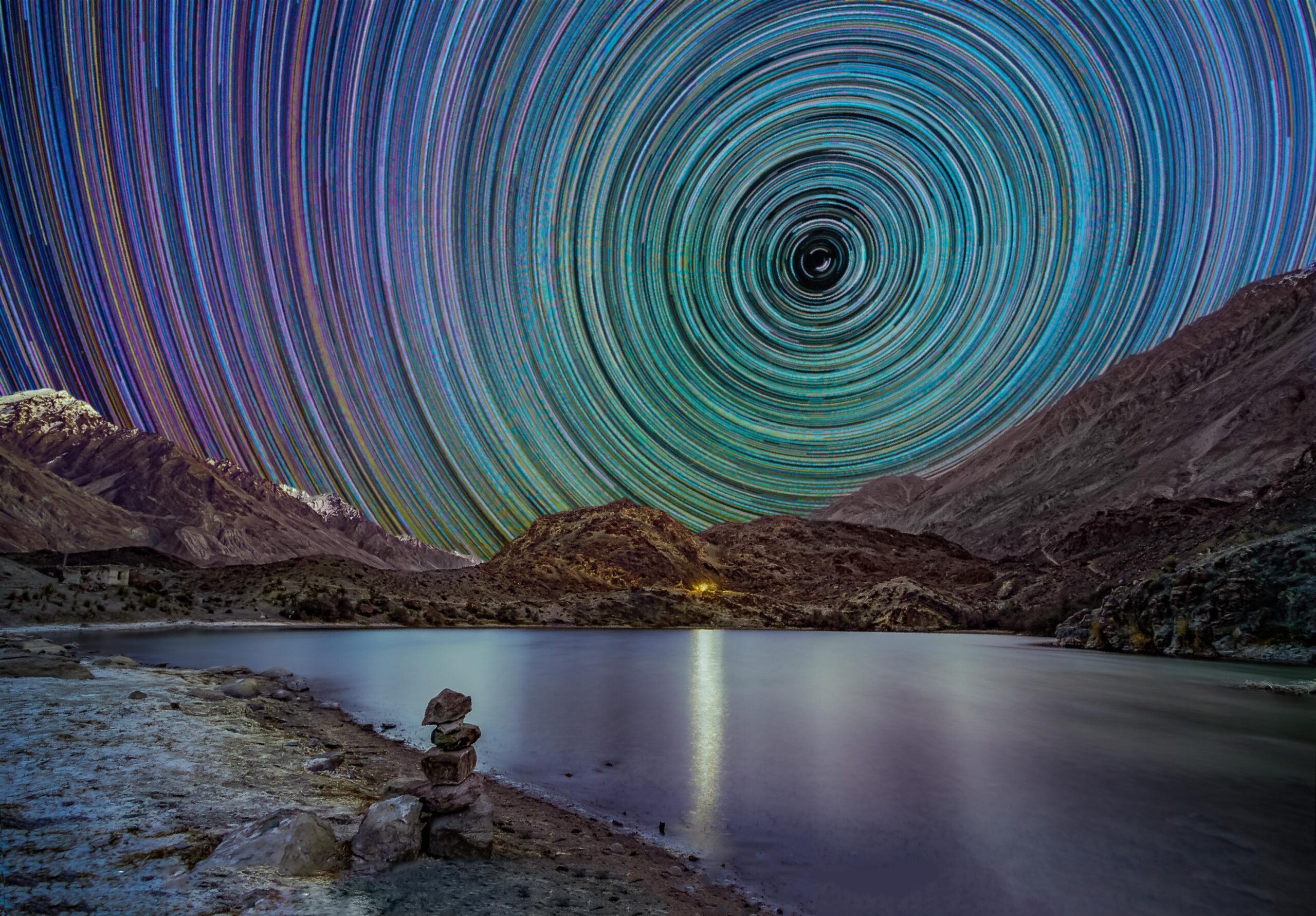
Astrophotography: An Extension of What Our Eyes Can See
For Dorje, the best thing about astrophotography is that most iconic locations in Ladakh are filled with tourists during the day, “but at night, the place is often all yours.”
But how does he obtain such incredible clarity, brightness and detail in his photos?
“Astrophotography is an extension of what our eyes can see and beyond. I aim to showcase what’s there, but we are constrained by limited sensitivity as our eyes flicker many times a second. But with a camera, we can open the shutter for more than 20-30 seconds and showcase a more beautiful nightscape. Ladakh has such a picturesque landscape along with good transparency that anyone can become a photographer as the frame is filled with interesting details. The same holds for nightscapes, too,” he explains.
Early in his hobby, he started with more starry skies in his images and less foreground. But over time found that there are not many changes in the milky way or other regions of the night sky that he was capturing. Hence, he realised over time that his images were getting a bit dull.
“Gradually, I started learning a bit more about the different nuances of photography with lots of leading lines (lines that appear in a photograph that have been framed and positioned by the photographer to draw the viewer’s eye towards a specific point of interest) and other elements put in to make it more interactive for the viewer. Today, 60% of each photo of mine contains the glorious landscape we live in, along with the starry skies. Beyond this change in perspective, many other elements helped improve the quality of my photos,” he claims.
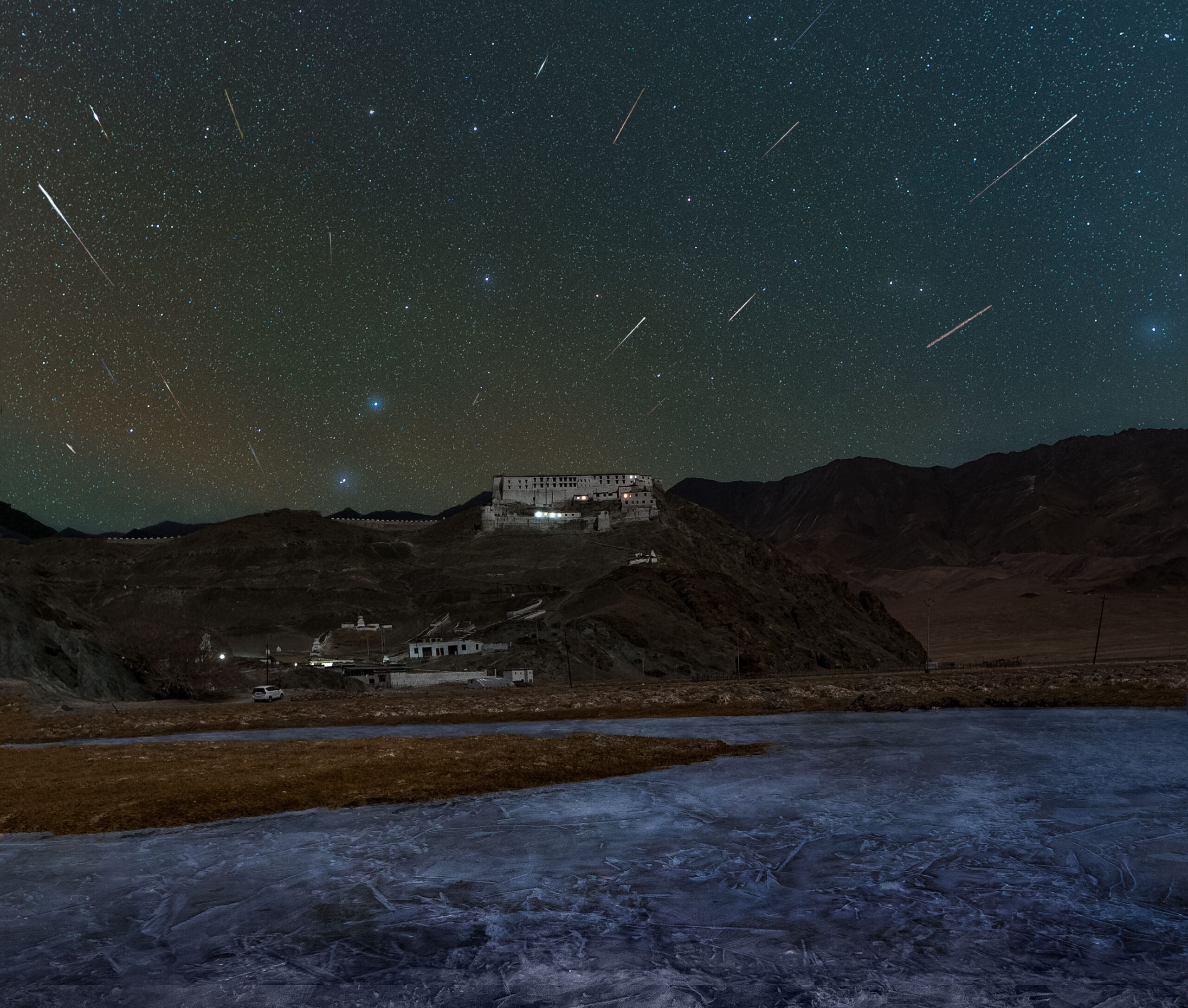
He lists out some of the elements that helped him improve the quality of his photos:
- Laying his hands on a fast prime lens (f/1.4 – f2.8) which helps garner more light than a zoom lens.
- Employing full-frame cameras due to their bigger sensor size, which additionally helps in collecting more light.
- Reading a variety of books on photography and watching lots of video tutorials on YouTube on nighttime photography. “I also paid for some tutorials to teach me the final nuances of photography like the one by Sudhir Sivaraman (wildlife photographer) and Paul Zizka, a renowned photographer from Canada,” says Dorje.
- Last but not least, it takes lots and lots of practice and learning and “I am still doing the same from wherever it is possible,” he adds.
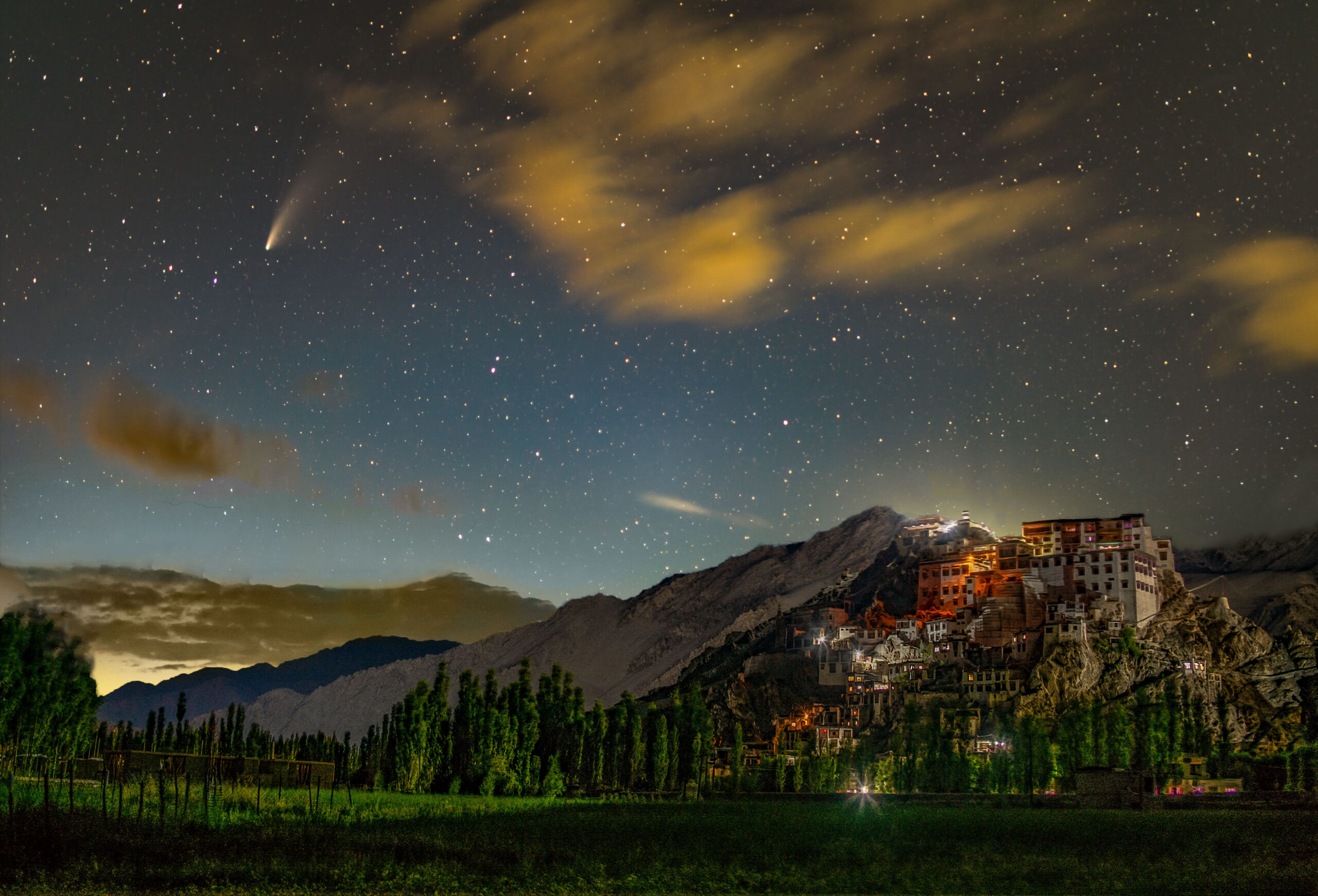
Light Pollution, Astrotourism
However, one of the most significant issues concerning how to capture the necessary details of our cosmos and astrophotography is light pollution.
“One of the first images I saw of Ajay was the beautiful nightscape of Leh city from Shanti Stupa. Inspired by him, I tried to replicate the same after a couple of years, but Leh had by then become fully illuminated, much to my dismay. My dream of getting a similar shot remains unfulfilled till now. From this experience, I learnt that Hanle should not go the same way. Having heard of the dark sky sanctuaries/parks/reserves worldwide, we thought of starting a pilot project at Hanle to safeguard the same for astronomy and Astro-enthusiasts. Once established, it can be replicated to all of Ladakh as well as other parts of the country,” he says.
The main concern at Hanle was the glares coming from the street lights, which were not adequately shielded and left uncontrolled throughout the night. The other problem is vehicles moving all through the night with their full beam headlights.
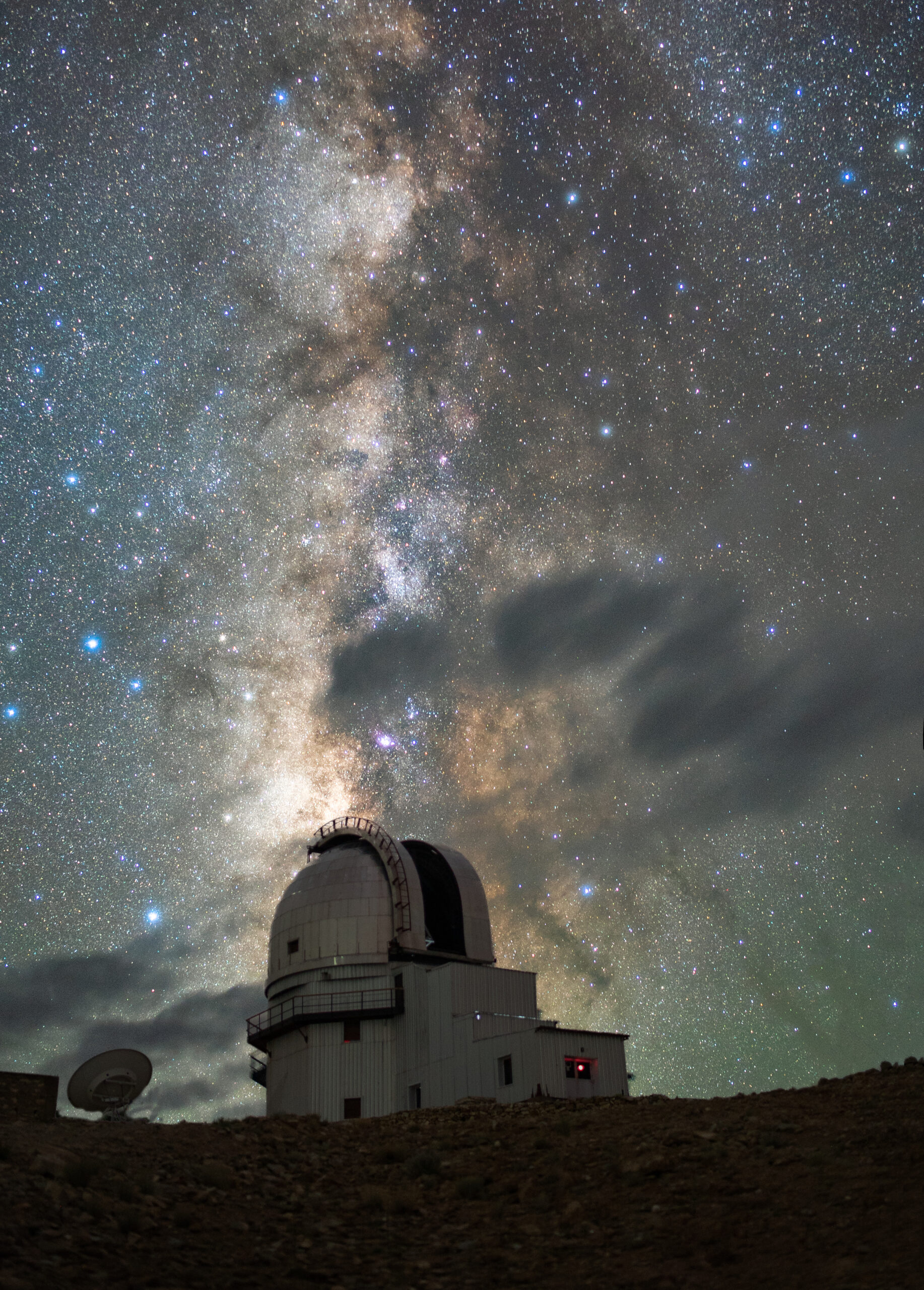
“In 1998, the then Director of IIA, Prof Ramnath Cowsik, instructed us to put up a board at the entry of the village prohibiting vehicles using full-beam headlights. Initially, we wondered how a vehicle 8 kilometres away from the observatory could disturb its observations. Later, when I started astrophotography and with more images from the telescope getting disturbed because of light pollution did I realise the importance of the same,” adds Dorje.
Ladakh may struggle to become a hub for Astro-tourism without addressing light pollution even though it’s probably the only location in India today that still has access to dark skies. In different parts of the world, dark sky sanctuaries have come up to help preserve the wonders of the night skies for future generations. These skies are part of our heritage.
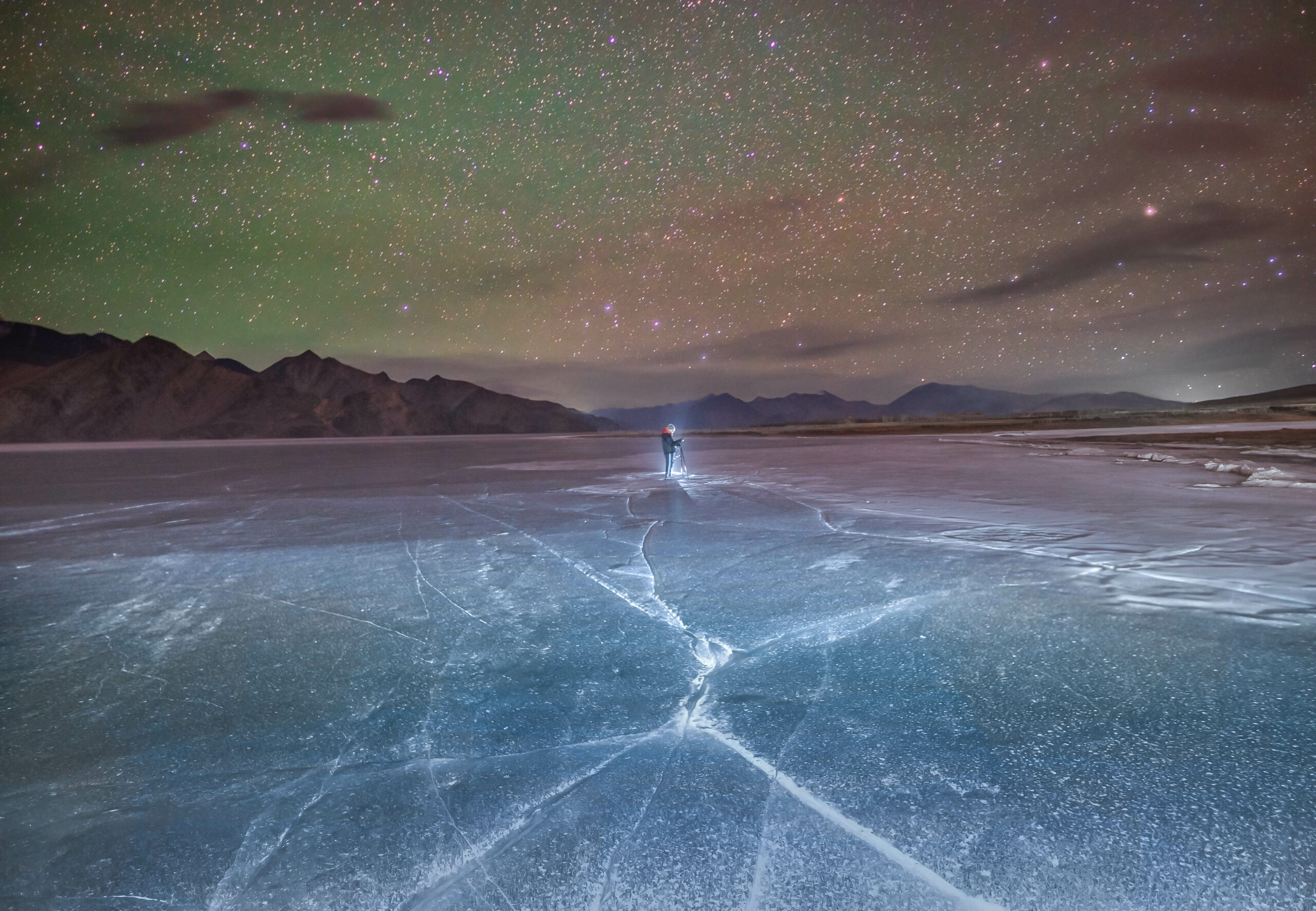
To preserve these elements of the earth’s heritage in Ladakh, Dorje has stood at the forefront.
Working closely with the local populace, he has campaigned to safeguard these pristine dark skies of Hanle and their surroundings in consonance with their developmental needs.
In fact, the IIA recently met with the Lieutenant Government of Ladakh and the Principal Scientific Advisor and submitted a proposal to convert Hanle into a Dark Sky Sanctuary. Taking the residents of Hanle on board, the IIA’s plan is to convince them to modify the lighting around their houses in a way that ensures light is not let out to the sky.
“Due to the presence of the Observatory at Hanle, a lot of people have begun visiting the region to witness the magical night sky. The number of homestays has increased significantly as a result. Earlier, the people living in Hanle were earning their livelihood as nomads. It’s also imperative to note that Hanle is a paradise for wildlife. Additional lights will disturb the flora and fauna, thus robbing them of their habitat. To ensure Hanle remains a dark sky we need to bring light pollution to a minimum. We use many instruments to illuminate our surroundings but a large fraction of this light is wasted into the sky. If the top and sides of a lamp are shielded, and all of its light is focussed downwards, not only will the sky remain dark for astronomy, but also improve the quality of illumination and save energy by using lower wattage bulbs,” he claims.
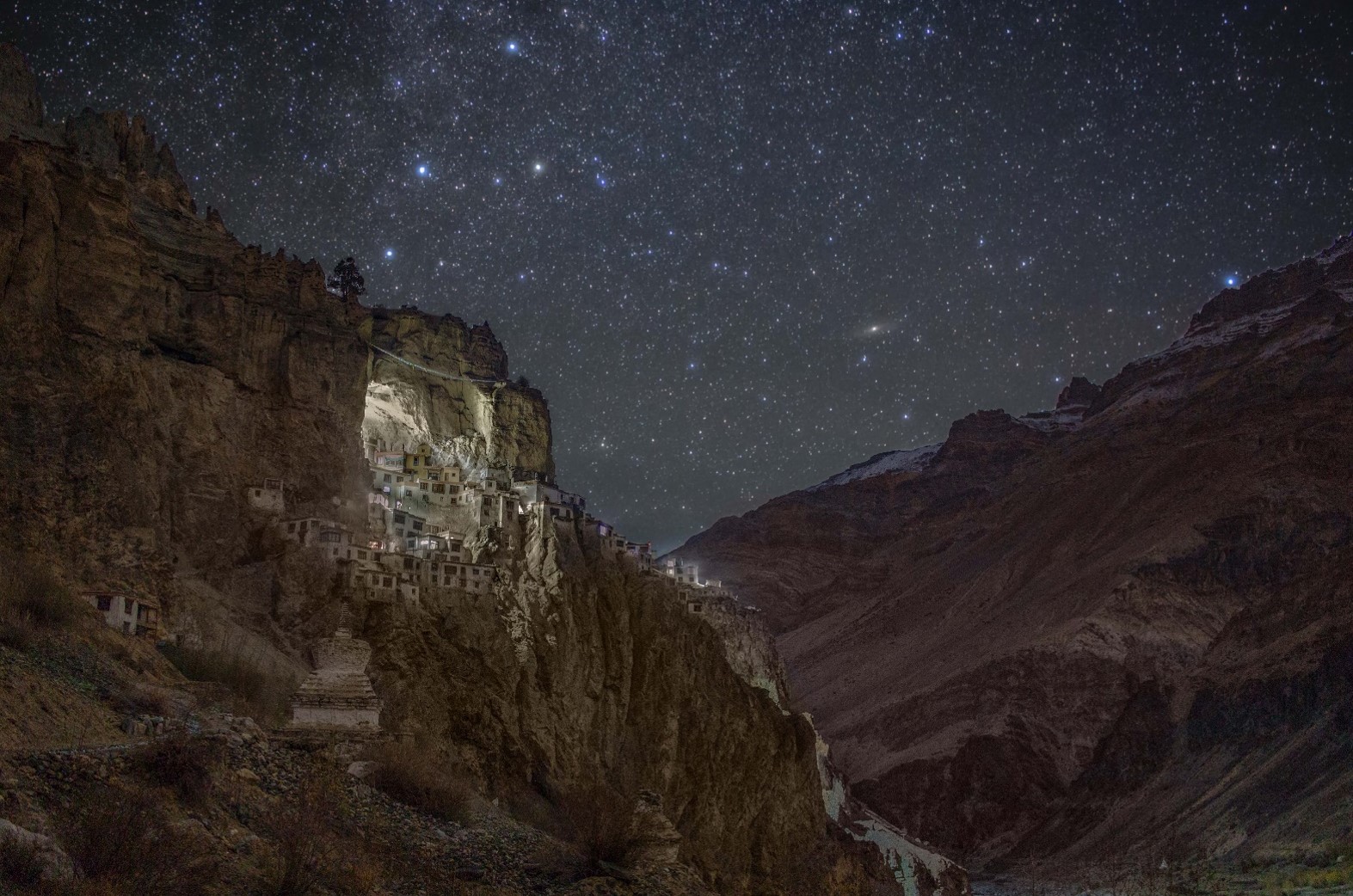
With support from the UT administration to convert Hanle into a Dark Night Sanctuary, “we at Hanle are working to obtain accreditation from International Dark-Sky Association and Starlight Foundation”, which are two major bodies dedicated to protecting night skies around the world.
Meanwhile, Dorje continues doing what he loves while also guiding many students to pursue their passion in astrophotography. An inspiration to many in Ladakh and beyond, he continues to build on his work in bringing the cosmos down to the earth.
(All images courtesy Dorje Angchuk. You can check out some of his other outstanding photos on Instagram.)
(Edited by Vinayak Hegde)
No comments:
Post a Comment